Inkstone One of 'Four Treasures of the Study'
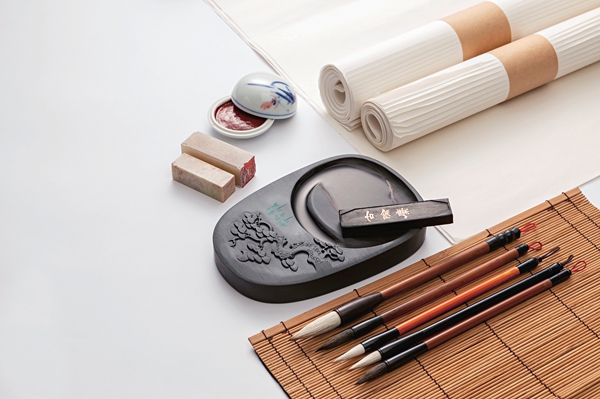
An inkstone is literally a stone mortar for grinding and containing ink. Writing brushes, inksticks, paper and inkstones, which were used as writing and painting tools in ancient China, are called the "Four Treasures of the Study." A high-quality inkstone embodies the wisdom and ingenuity of the inkstone maker. The craft of making inkstones is on China's list of intangible cultural heritage.
Traditional Chinese ink is usually solidified into sticks for easier transport and preservation. Water is usually kept in a ceramic container and sprinkled on the inkstone, which generally has a flat surface. The inkstick is ground on the surface. By mixing ink with different amounts of water, the calligrapher or artist can create different densities, and innumerable shades of black and gray.
Colorful stones, including gray, light green and black, are used to make inkstones. In addition to stones, inkstones are also manufactured from clay, bronze, iron and porcelain. Many of the most expensive inkstones are not intricately carved, but simply designed to allow the natural beauty of the stones to shine through.
For millennia, several regions in China have been known as "homes to the inkstones." The production of a handmade inkstone is quite an art; each inkstone embodies the craftsman/craftswoman's superb craft-making skills. Through the exquisite works of art, which embody the regions' distinct cultural features, one may not only get a glimpse into the residents' aesthetic tastes and spiritual pursuit, but also have a better understanding of the residents' folk customs and traditional ideas.

Duan Inkstones
For more than a millennium, numerous Chinese literati have favored Duan Inkstones, which have been produced in Baishi and Binri (villages in Huanggang, a town in Zhaoqing, a city in South China's Guangdong Province). The inkstone-making craft, integrated with traditional Chinese cultural elements, has become China's cultural "name card." Given the items' ingenious and creative designs, many Chinese and foreign artists recognize the craft as an exquisite art form. In 2006, China added the craft of creating Duan Inkstones to the list of the country's items of intangible cultural heritage.
Records indicate the craft originated during the Tang Dynasty (618-907). During the past millennium, the craft has been handed down (among residents of Baishi and Binri) from generation to generation. Approximately 80 percent of the villagers have made a living by creating inkstones.
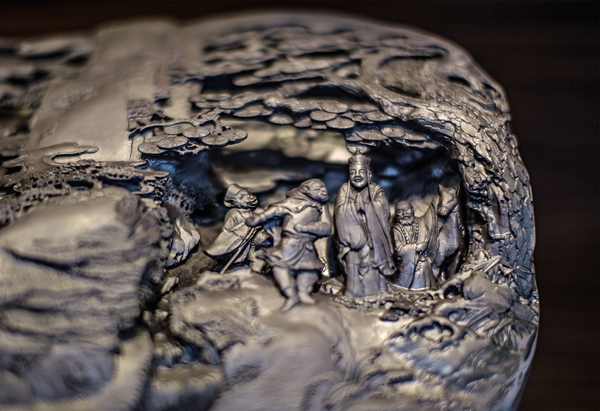
To make Duan Inkstones, craftspeople must complete several complicated procedures, including quarrying stones, designing and carving patterns (on the items' surfaces), and polishing the works.
Duan inkstones have high artistic and collectible value. However, given the rapid industrial and technological development in China during the past several decades, many craft-based enterprises have had a hard time surviving the fierce market competition.
In recent years, Huanggang has conducted various activities (including inviting craftspeople to teach residents how to make inkstones and other crafts) to help residents raise their awareness of the importance of promoting the intangible cultural heritage. All of the activities have been well received by the residents.
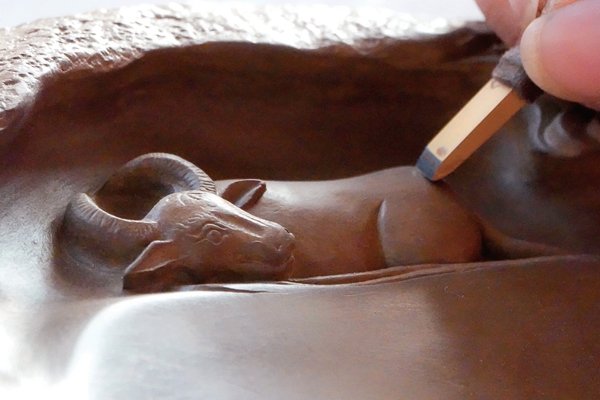
Chengni Inkstones
Among China's famous inkstones, Chengni Inkstones, produced in Xinjiang (a county in North China's Shanxi Province), are the only products made from ceramics. The first Chengni Inkstones were created during the Western Han Dynasty (206 BC-25 AD), and the craft was at the height of its popularity during the Tang and Song (960-1279) dynasties. During the dynasties, exquisite Chengni Inkstones were offered as tributes to members of the imperial families.

It takes a craftsman/craftswoman more than a year, on average, to make a Chengni Inkstone, which involves dozens of complicated procedures, including mixing the clay with water, kneading the clay into a strip, putting the strip into the mold to make the inkstone, heating the item at over 1,000 C to shape the work, drying the item in the sun and carving patterns on the item's surface. As it takes a lot of effort to create the inkstones, the items have high artistic value.
Due to some historical reasons, the craft of making Chengni Inkstones started to wane during the late-Ming Dynasty (1368-1644). During the past several decades, Ling Yongmao and his son, Ling Tao, both natives of Xinjiang, have put much effort into studying the traditional craft, and into improving their craft-making skills. As a result, the traditional craft underwent rejuvenation.
She Inkstones
The first She Inkstones were produced in Shezhou (today's Shexian, a county in East China's Anhui Province) during the Han Dynasty (206 BC-220 AD). The items were most popular during the Tang Dynasty. The inkstones have been one of the most-sought-after-items, especially among Chinese literati, for a millennium. After the People's Republic of China was founded, in 1949, the craft (of creating She Inkstones) gradually developed to a higher level. As Chinese people's living standards have substantially improved since 1978, when China implemented its policy of reform and opening-up, an increasing number of Chinese have taken delight in collecting the inkstones. That has promoted the development of the traditional craft. In May 2006, the craft of making She Inkstones was listed among the first group of China's items of intangible cultural heritage.
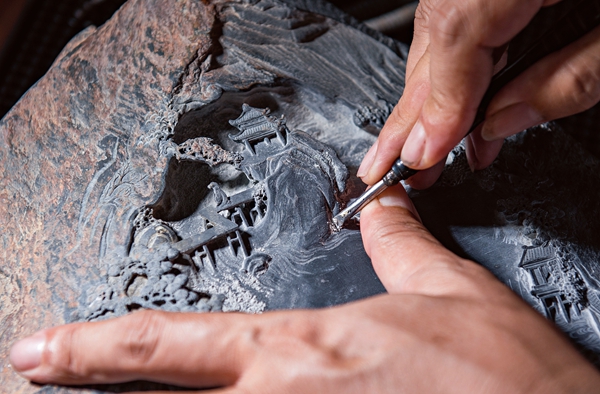
Wang Zuwei, a native of Huangshan, a city in Anhui Province, is a State-level inheritor of the craft. He has been creating She Inkstones for more than 30 years, during which he has won many prizes for his artworks.
During the past five years, Wang, a deputy to the 13th National People's Congress (NPC), has made 32 proposals, to promote Anhui's traditional cultural development, during the annual NPC sessions. For example, during the First Session of the 13th NPC, held in March 2018, Wang suggested Huangshan should establish a university dedicated to cultivating successors to the traditional Chinese crafts, so the art forms will not be lost. During the Fifth Session of the 13th NPC, held in March 2022, Wang made several proposals to promote the development of the State-level Huizhou Cultural and Ecological Protection Zone.

Tao Inkstones
For millenia, Zhuoni (a county in Gannan Tibetan Autonomous Prefecture, in Northwest China's Gansu Province) has been known for its smooth, handmade inkstones, known as Tao Inkstones.
Tao Inkstones are made from stones in a valley in the middle reaches of the Tao River (in Gansu). Given the high air humidity (in the valley), the stones are as fine and smooth as jade. Also, the light-green stones, with dark green stripes (on them), are a delightful sight.
Small Items, Big Roles
During the past millennium, small inkstones have played big roles in promoting traditional Chinese culture. As the imperial government began holding the imperial civil service examination during the Sui Dynasty (581-618), there was an increasing need for inkstones among the literati.
Given the improvement of people's aesthetic tastes during the Song Dynasty (960-1279), many literati took delight in appreciating and collecting valuable inkstones, including Duan and She inkstones.
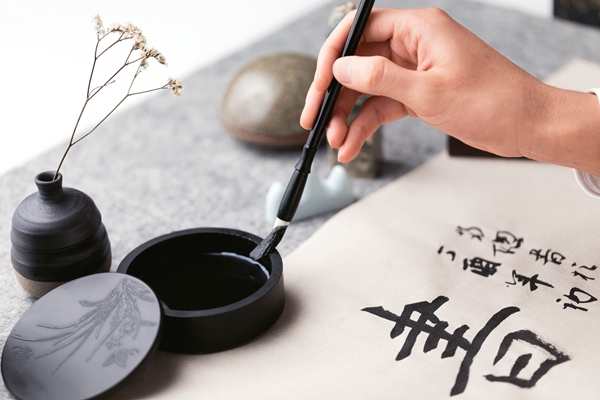
As the craft (of creating inkstones) gradually developed to a higher level during the Ming and Qing (1616-1911) dynasties, it became trendy, especially for men of letters, to paint and/or write poems, or write inscriptions, on the surfaces of the inkstones.
Nowadays, as many Chinese use pens/pencils, rather than writing brushes, to write, the people attach greater importance to inkstones' artistic value than the items' practical value. The crafts are integrated with the elements of various art forms, such as carvings and paintings. Moreover, as inkstones embody China's aesthetic, cultural and artistic ideologies, the items have high historical and cultural value.
Photos Supplied by VCG
(Women of China English Monthly January 2023 issue)
Please understand that womenofchina.cn,a non-profit, information-communication website, cannot reach every writer before using articles and images. For copyright issues, please contact us by emailing: website@womenofchina.cn. The articles published and opinions expressed on this website represent the opinions of writers and are not necessarily shared by womenofchina.cn.

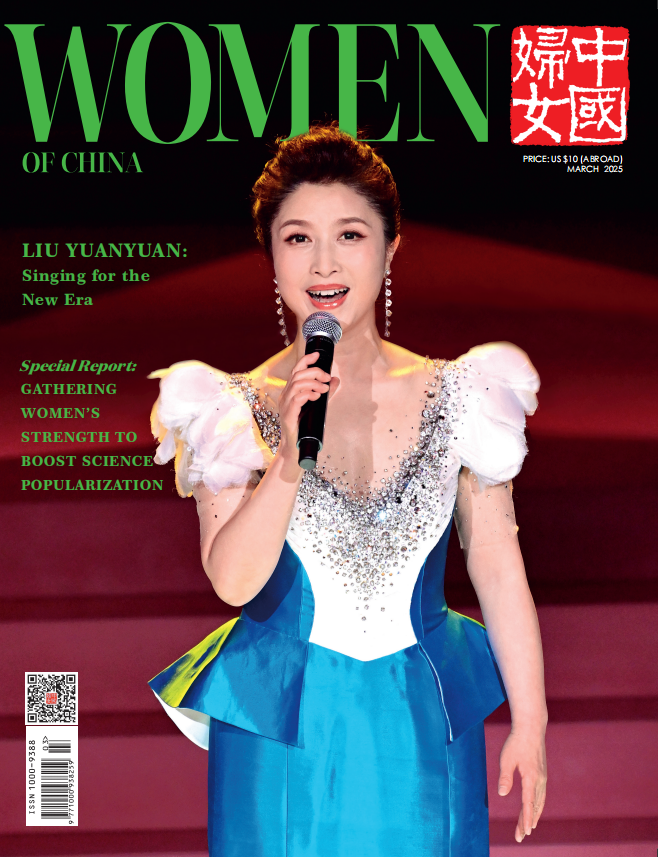




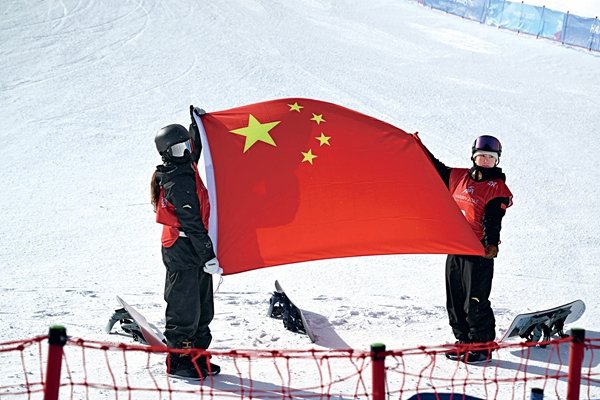
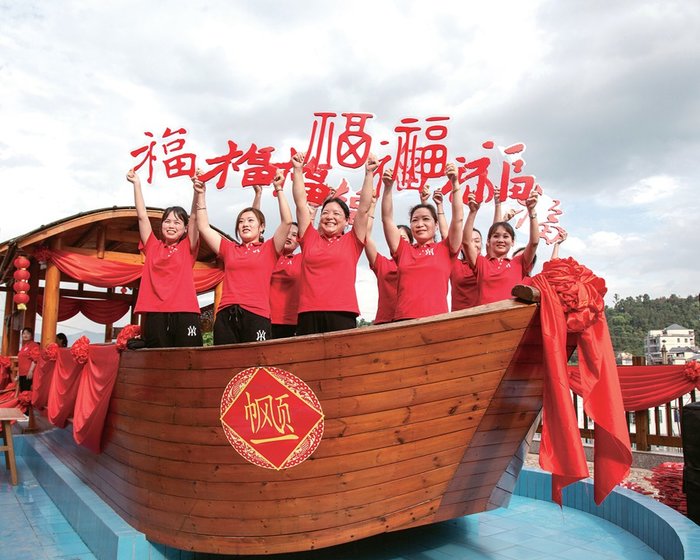
.jpg)

 WeChat
WeChat Weibo
Weibo 京公网安备 11010102004314号
京公网安备 11010102004314号